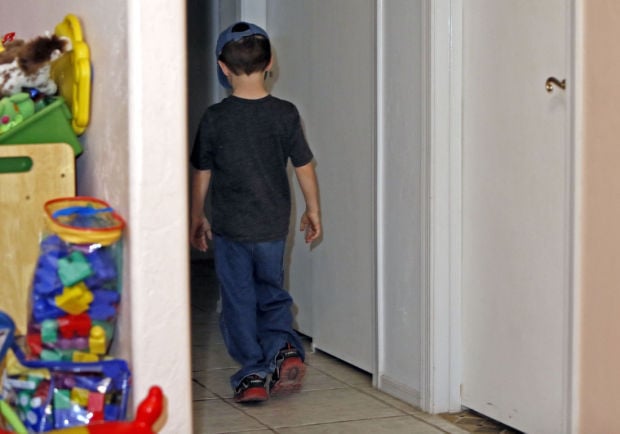It’s no surprise Arizona’s foster children struggle at school, considering the chaos and uncertainty in their lives.
But a new study that aimed to quantify the “invisible achievement gap” found a staggering canyon: Foster children have the state’s highest dropout rate and among the lowest graduation rates.
Forty percent of these children and teens changed schools during the 2012-13 school year — and 1 in 7 attended three or more schools that year.
Their academic performance trails that of every other type of student — even those facing significant risk factors such as poverty, limited English-language proficiency and a variety of disabilities.
“I hope it does highlight their great need for support,” said Vanessa Barrat, a lead researcher on the study, which was conducted by San Francisco-based WestEd.
“I think that what is important to realize is that this study is a first step, but it’s an important first step.”
The study was requested by the Arizona Community Foundation and FosterEd, a foster youth education program based in Pima County. The Arizona Department of Education and the state’s Department of Child Safety provided the data.
Arizona is responsible for the children in its care, and this must include children having the support they need to succeed in school, said Pete Hershberger, a former state legislator who runs FosterEd.
“It is not the responsibility of any one state agency, but of multiple state agencies,” he said. “That’s why funding for a foster youth education program should come from the general fund and not from the budget of any one agency.”
“You get behind”
During the study, 1.1 million students ages 5 to 17 were in the state’s public schools. Among those, 10,770 students — about 1 percent of the state’s student population — spent time in foster care that year.
Students in foster care changed schools at much higher rates than other students. While only 10 percent of students statewide change schools during the school year, 40 percent of children and teens in foster care do.
“This is a big impediment to achieving any sort of successful academic performance,” Hershberger said. Only 58 percent of students in foster care attended the same school for the full school year, and nearly 1 in 7 attended three or more schools during one academic year.
Chy Sky of Tucson was a high school student here while the study took place. Now 18, Sky attended seven local high schools before she graduated from Desert Rose Academy in May.
She is now working in retail and plans to attend college to study forensic chemistry. She hopes to one day work in law enforcement as a criminal investigator.
Sky was attending Marana High School when she was removed from her home and placed in foster care. That first placement was temporary, the second was disrupted, then she was moved into a group home. After that, she started a semi-independent program though Vision Quest.
Sky says she pushed hard to graduate even though the changes were challenging, and she was sometimes bullied by other students.
“It was hard to find friends when you change schools all the time,” she said. “You get behind in your classes and you get behind in your social life as well.”
Many just drop out
At the time of this study, the majority of Arizona’s foster students were enrolled in a small number of districts. The most, 1,087, were in Tucson Unified School District. Mesa Unified School District had the second largest number, 542.
Using data from the 2012–13 school year, the study shows that only 61 percent of foster care students met or exceeded standards in reading and only 40 percent met or exceeded standards in mathematics. In comparison, 71 percent of children from poor families met reading standards and 54 percent met mathematics standards.
As a group, high school students in foster care had the highest dropout rates of all Arizona students, at 18 percent, and a graduation rate of 33 percent — less than half the state average.
More Study findings
Other findings in the study include:
- Students in foster care were far less likely to attend the state’s highest-performing schools and were more likely than the statewide population to attend the state’s low-performing schools.
- At every grade level in which statewide testing occurred, students in foster care were less likely to participate than the other student group.
- The single-year dropout rate for students in foster care was 12 percent in grade 9, three times greater than the percentage for students coming from poor backgrounds.
- The single-year dropout rate increased each year for all groups but was consistently higher for students in foster care, rising to 18 percent in grade 12, and peaking at 21 percent for students in foster care who also were coping with a disability.
- The graduation rate for all grade 12 students statewide was 78 percent the year of the study, but for students in foster care, it was just 33 percent — one of the lowest rates among the at-risk student subgroups. And among students in foster care, only 28 percent who were also coping with a disability graduated from high school.
- Foster children and teens were coping with a disability at twice the rate of both comparison groups, and, among students with disabilities, students in foster care were more than four times more likely to be classified as having an emotional disability than any other students.






